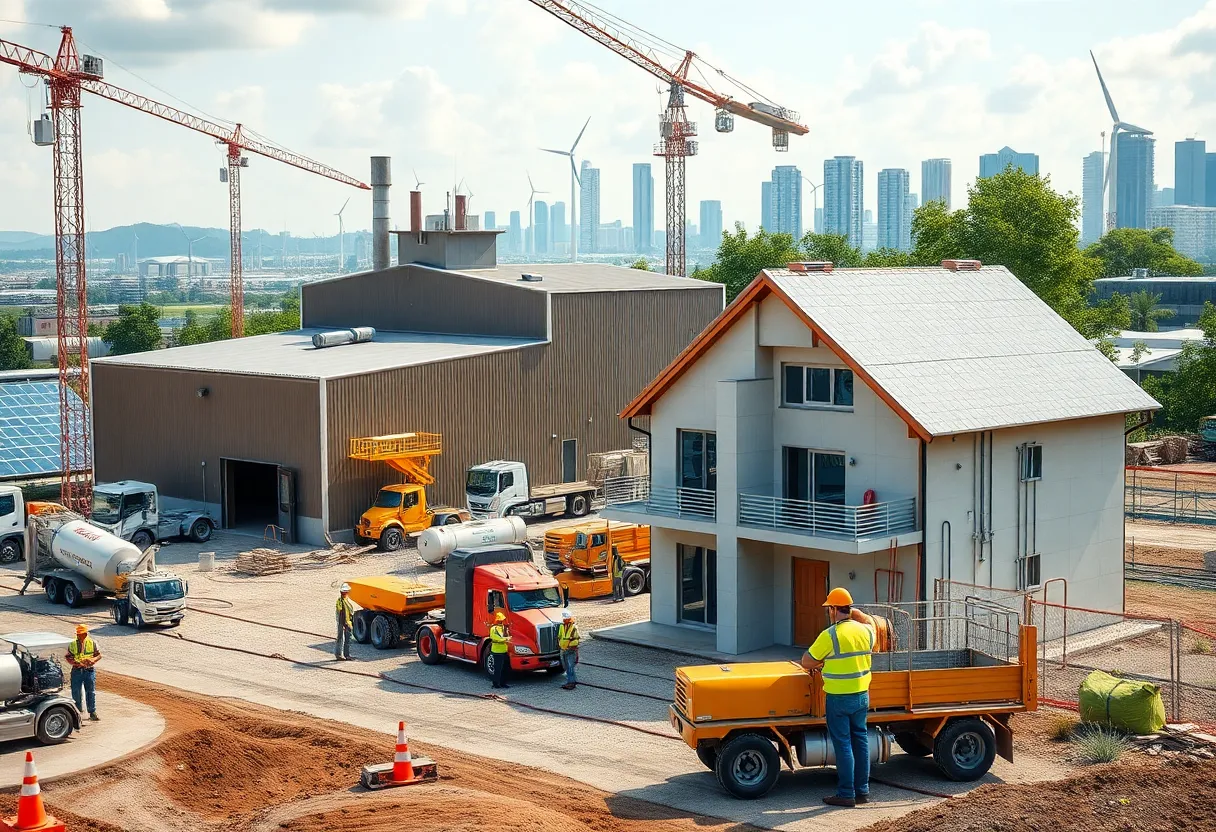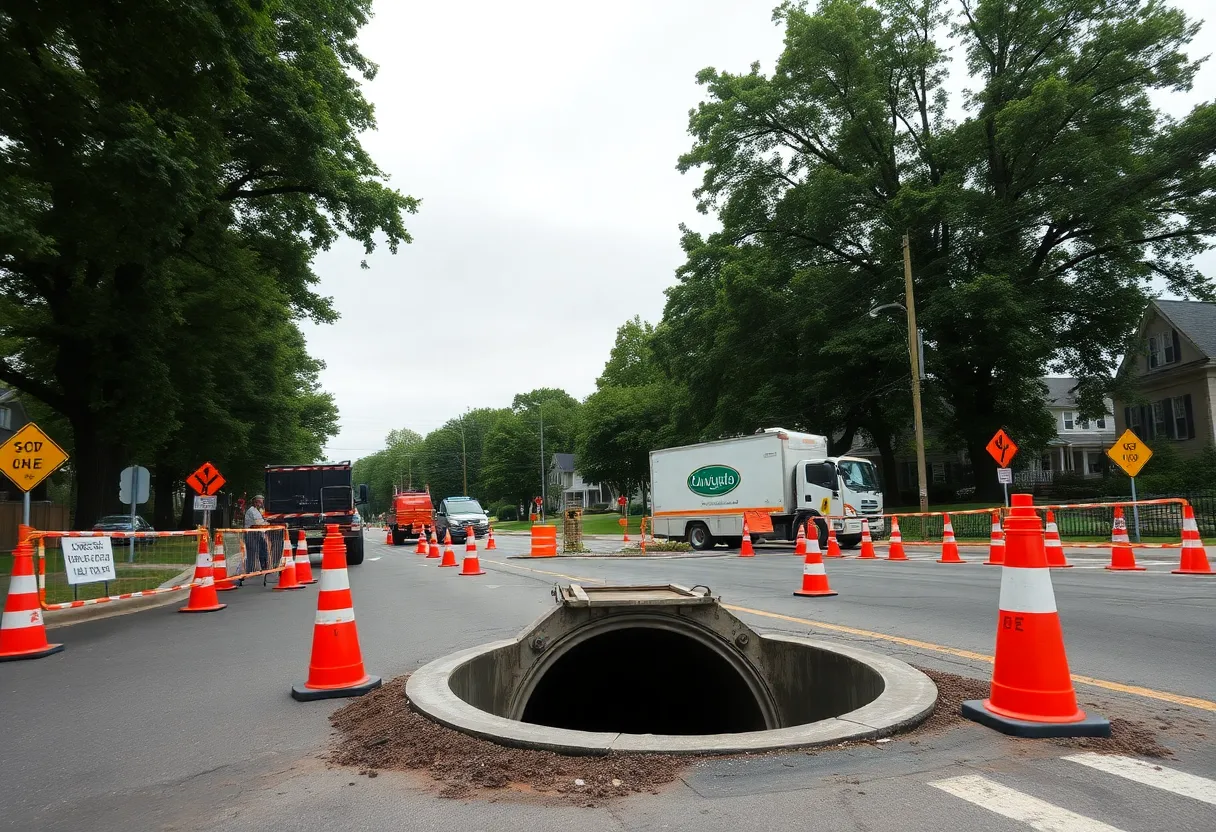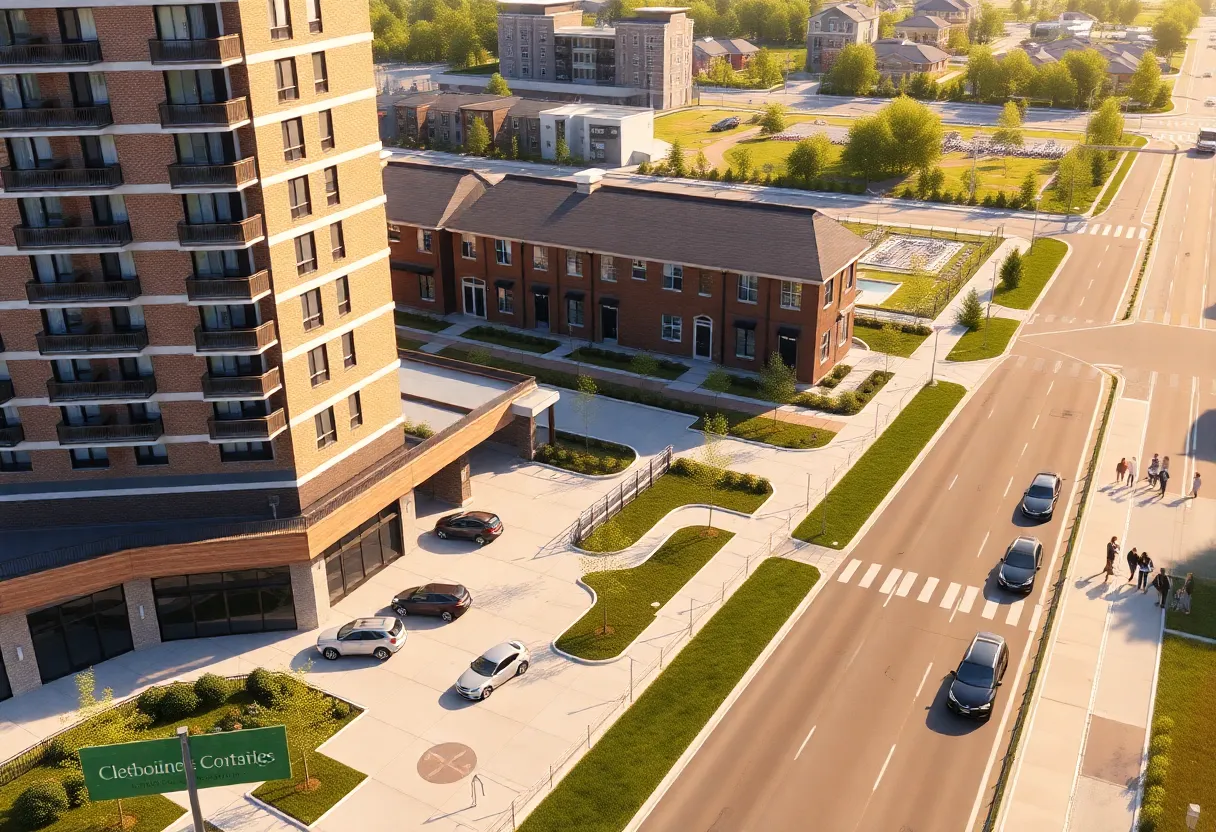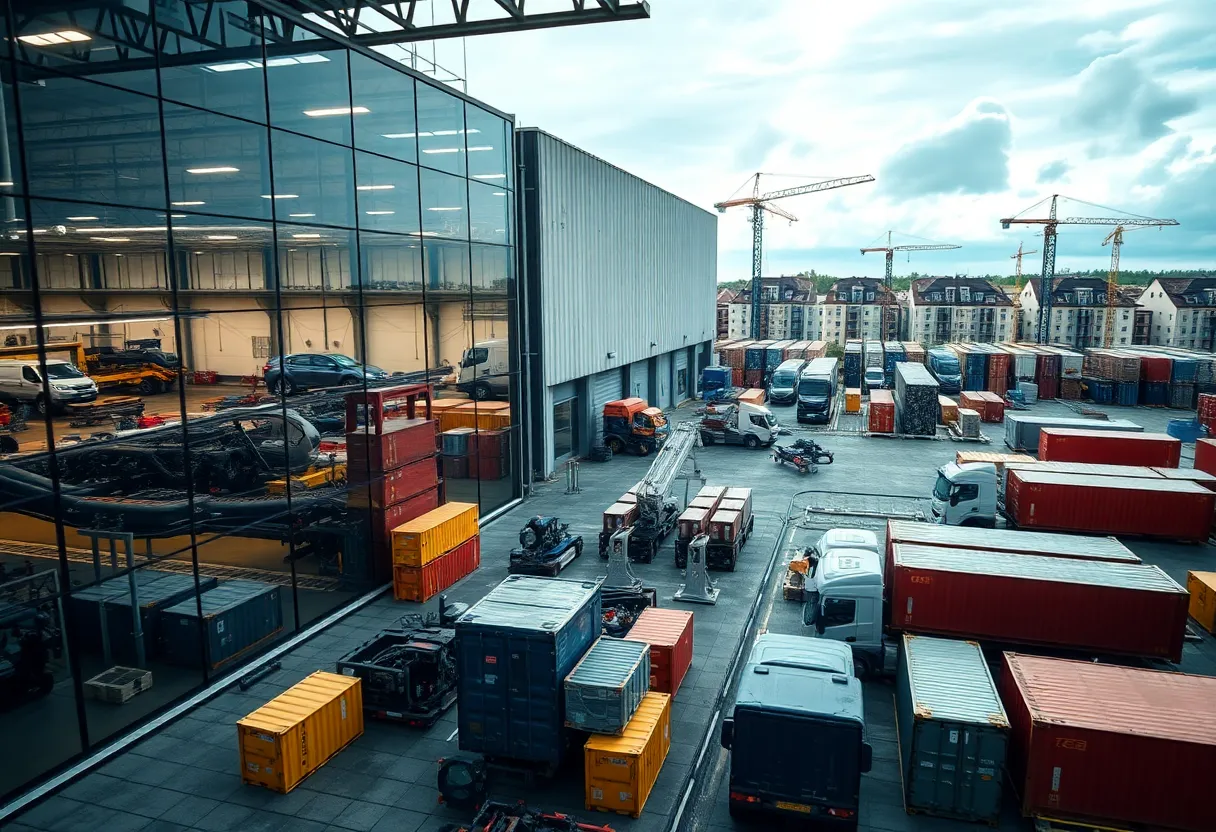Yaroslavl, Russia, September 8, 2025
News Summary
Three sector developments signal near-term shifts in construction and building materials. A climate-tech cement developer secured venture debt to scale an alkali-fusion, AI-driven ultra-low carbon cement that claims up to 85% CO2 reduction versus traditional Portland cement. In Yaroslavl a multi-company team completed Europe/CIS’s first residential 3D-printed house, printed in parts and assembled on site, now connected to utilities and habitable. Separately, an investor programme published its Top 50 Contech startups and a market report showing strong deal activity and investor focus on productivity and green construction, informing priorities for contractors and funders.
Venture Debt Fuels Scale-Up of Ultra‑Low Carbon Cement Technology
The article reports that a company focused on reducing cement’s climate impact has secured a venture debt facility from a UK-based innovation banking unit of a major financial partner. The funding is targeted to support ongoing development and the scaling of an ultra‑low carbon cement technology built on alkali fusion and AI‑powered design. The company’s first product, MevoCem, is positioned to cut CO2 emissions by as much as 85% when compared with traditional Portland cement methods. This technology aims to address cement, one of the industry’s most significant sources of greenhouse gas emissions, as it seeks to accelerate its global deployment.
The venture debt facility is described by project leadership as a key step in diversifying funding sources beyond grants and equity, with the stated purpose of expanding commercial traction and scale. A representative from the innovation banking unit noted a continuing commitment to supporting climate tech companies that aim to lower construction sector emissions and advance sustainable development across markets.
In addition to the funding, the arrangement is framed as part of a broader effort to strengthen the company’s capital stack as it matures and scales internationally. The facility is also seen as opening doors to broader financing options, enabling the company to pursue growth opportunities across its commercial pipeline while maintaining a focus on environmental impact. The initiative highlights ongoing collaboration between climate tech developers and financial partners to back technology that can move the needle on global emissions in construction.
Contech Startup Landscape 2025: Investment Trends and Focus Areas
A separate industry overview identified that construction technology investments continued to evolve, with a four‑focus lens on the years ahead. The 2024 data show total investment of approximately US$3.1 billion spread across 325 deals, accompanied by a roughly 38% increase in deal count and a 2.3% rise in total invested capital versus 2023, all amid uncertain macroeconomic conditions. The analysis emphasizes sustained investor interest in digital and sustainable solutions that support carbon reduction, productivity gains, and supply‑chain agility.
Among the investment activity, deals aligned with Enhanced Productivity represented nearly 47% of the disclosed transactions, while Green Construction accounted for about 24%. The compilation underscores a strategic shift toward solutions that can accelerate transformation in the construction sector, with a focus on digital tools and decarbonization pathways. The annual report presents a global view of trends and includes a forecast of innovation and investment dynamics for 2025.
Industry leadership highlighted that the investment pattern reflects an emphasis on scalable solutions capable of driving long‑term progress toward carbon neutrality by 2050, while also addressing efficiency and resilience within construction workflows. The report frames the Top 50 Contech Startups list as a strategic snapshot of ongoing progress, showing how startups are adopting new technologies and aligning with broader industry transformation goals.
First Large‑Scale 3D‑Printed Residential Home in Europe/CIS Timeline and Details
A housing project in Yaroslavl, Russia, is described as the first residential building in Europe and the CIS built with a specific construction 3D printing technology. Initiated in 2015, the building frame was printed in sections and assembled on site within about one month in December the following year. By the summer of 2017, the roof and interior finishing were completed, with the house connected to all utility systems and prepared for occupancy. The project is notable for being designed and constructed for real residence rather than demonstration purposes, with a 100% ordinary family slated to live there. Compliance steps were completed, including project design, building permit issuance, technical passport documentation, and cadastral registration anticipated by late 2017.
The 298.5 square meter home is claimed to be the largest building in Europe and the CIS produced using additive construction technology. The printing was performed using a portal‑type construction printer capable of handling walls, decorative elements, and a tower component, then assembled on site much like a Lego kit. The printer used for the project, with a working field of approximately 3.5 by 3.6 by 1 meters, printed with a standard M‑300 sandcrete mix. Printing layers were typically 10 mm high and walls were produced at speeds up to about 15 square meters per hour. The process represents a stage in which end‑to‑end production efficiency improved markedly, reducing the time from design to production by a factor of 8 to 12 compared with traditional methods.
The printing equipment owner describes itself as a leading developer and manufacturer of professional 3D construction printers, with records indicating expansion from small‑format outputs to full buildings up to three stories in height. The 3D printing platform was developed in Russia and, over time, has expanded its footprint to several countries. The technology’s claimed capabilities extend to creating complex architectural geometries and structural elements, highlighting a broader push toward digital fabrication in the construction sector.
Notes on the Content and Context
The information discussed is drawn from industry reporting and is presented here to inform readers about ongoing advances in sustainable construction technology, including low‑carbon cement alternatives and large‑scale additive manufacturing. The content summarizes technical and market indicators relevant to the construction tech ecosystem without endorsing any single organization or source.
FAQ
What is venture debt and how can it support climate tech startups?
Venture debt is a financing instrument designed to complement equity funding by providing growth capital through debt instruments. It helps climate tech startups extend their runway, fund scale‑up activities, and diversify their capital stack without diluting equity at early growth stages.
What is MevoCem and its claimed advantage?
MevoCem is a cement alternative developed to significantly reduce lifecycle CO2 emissions compared with conventional cement. The technology integrates alkali fusion and AI‑driven design to achieve substantial environmental benefits while maintaining performance in cement applications.
What is AMT‑SPECAVIA and what is notable about the Yaroslavl project?
AMT‑SPECAVIA is a Russia‑based group specializing in construction 3D printing technology. The Yaroslavl project is highlighted as the first residential building in Europe and the CIS constructed with their additive process for real use, featuring a large printed footprint and an end‑to‑end development cycle from design to cadastral registration.
What are the main focus areas of the Top 50 Contech Startups 2025 list?
The focus areas include Green Construction, Enhanced Productivity, Construction Supply Chain, and Future of Construction. The list and accompanying analysis reflect ongoing digital and sustainable innovation expected to drive sector transformation and investment in 2025.
What 2024 investment trends stand out for Contech?
Industry data show a broad increase in deal activity and total capital, with notable emphasis on deals related to productivity improvements and sustainability solutions. The trends suggest investors remain confident in the sector’s potential to deliver scalable, decarbonizing technologies despite macroeconomic uncertainties.
| Feature | Description |
|---|---|
| Ultra‑low carbon cement technology | MevoCem uses alkali fusion and AI‑driven design to significantly reduce emissions versus traditional cement, with potential reductions up to 85%. |
| Venture debt financing | A UK‑based innovation banking unit provides debt facilities to support scale‑up and diversify financing beyond grants and equity. |
| 3D printed residential project | A large printed house in Yaroslavl, Russia, demonstrates end‑use capability of construction 3D printing with real occupancy plans and compliance steps completed. |
| Industry investment trends | 2024 saw US$3.1B invested across 325 deals, with strong shares in Enhanced Productivity and Green Construction, signaling ongoing sector transformation. |
| Regional and technology breadth | Material and equipment developments span cement chemistry, digital design, and additive manufacturing across multiple countries and markets. |
Deeper Dive: News & Info About This Topic
Additional Resources
- WorldCement: Material Evolution secures venture debt from HSBC
- Wikipedia: Cement — Environmental impact
- VoxelMatters: First 3D‑printed live building in Europe unveiled (Yaroslavl)
- Wikipedia: 3D printing — Construction
- WorldCement: CEMEX Ventures unveils the Top 50 Contech startups of 2025
- Google Search: Contech startups 2025 Top 50
- WorldCement: Holcim UK launches construction industry roadmap
- Encyclopedia Britannica: Holcim (search)
- OpenPR: CIS Construction Chemicals in Europe market booms 2025
- Google News: CIS construction chemicals market 2025





